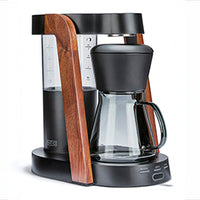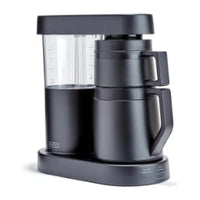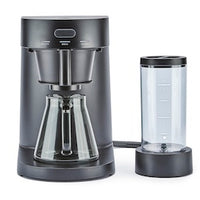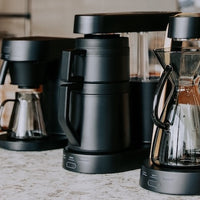Most People Store Beans Like This, And It’s Ruining the Flavor
Key Takeaways
-
Improper storage is one of the fastest ways to dull coffee’s flavor and aroma
-
Coffee beans are highly sensitive to air, light, heat, and moisture
-
Common mistakes include clear containers, warm shelves, and frequent opening
-
Airtight, opaque containers in a cool, dry place preserve freshness best
-
Grinding only before brewing keeps beans at peak flavor
-
Buying smaller quantities more often is better than bulk storage for months
If you’re buying quality coffee beans but still ending up with flat, uninspiring brews, your storage method might be to blame. Even the freshest roast can lose its spark quickly when exposed to the wrong environment. Understanding the science of coffee staling and correcting storage mistakes is key to maintaining flavor.
Why Coffee Beans Lose Flavor So Quickly
Coffee’s magic comes from volatile aromatic compounds — the molecules responsible for the complexity and character you taste. These are fragile and begin breaking down immediately after roasting. The four main enemies are:
-
Oxygen: Oxidation dulls aroma and taste, making coffee taste flat
-
Light: Especially UV light, which accelerates chemical degradation
-
Heat: Speeds up staling reactions and can create off-flavors
-
Moisture: Leads to clumping, faster staling, and even mold in severe cases
The moment beans leave the roaster, they begin a slow decline. Good storage slows that decline; poor storage speeds it up.
Common Storage Mistakes
1. Leaving Beans in the Bag
Most retail coffee bags, even resealable ones, are not completely airtight. They’re fine for short-term use, but if you open them daily, oxygen exposure adds up.
2. Using Clear Containers
While glass jars look stylish, they let in light that breaks down flavor compounds. Even indoor light over time can have an effect.
3. Storing Near Heat Sources
Placing beans next to an oven, above a dishwasher, or near a sunny window means repeated exposure to heat, which accelerates staling.
4. Frequent Opening
Every time you open a container, fresh oxygen enters. If you store a large quantity, divide it into smaller containers to minimize exposure.
5. Freezing Incorrectly
Freezing can preserve freshness, but only if beans are sealed in airtight, moisture-proof bags. If thawed and refrozen repeatedly, they’ll develop moisture damage and off flavors.
The Ideal Storage Environment
For maximum freshness:
-
Use airtight, opaque containers to block oxygen and light
-
Store in a cool, dry location far from heat sources
-
Minimize container openings — portion beans into smaller batches
-
Buy quantities you’ll use within 2–4 weeks of roasting
Recommended Containers
-
Stainless steel canisters with one-way valves
-
Ceramic jars with rubber gasket seals
-
Opaque food-safe plastic designed for coffee storage
Grinding Only Before Brewing
Whole beans retain freshness far longer than ground coffee. Once ground, the surface area increases dramatically, and oxidation speeds up.
For the best taste:
-
Grind only what you need immediately before brewing
-
Keep beans whole until the last possible moment
How Poor Storage Affects Your Brew
Poor storage changes coffee’s balance:
-
Aroma: Diminishes noticeably
-
Flavor: Becomes muted or imbalanced
-
Mouthfeel: May feel thinner due to loss of aromatic oils
-
Sweetness: Declines as compounds degrade
Even premium beans will taste ordinary if mishandled.
Can You Revive Stale Beans?
Once staling occurs, it’s irreversible. However, you can repurpose them:
-
Use for cold brew, which masks some staleness
-
Blend with fresh beans for non-espresso brewing methods
Still, prevention is far more effective than salvage.
How Long Beans Last with Good Storage
-
Whole beans: Peak flavor for 2–4 weeks after roasting
-
Ground coffee: Peak flavor for only a few days
-
Frozen (airtight): Can last up to 2–3 months, but best used sooner after thawing
Why Smaller Purchases Help
Buying coffee in smaller amounts ensures you’re always brewing with beans that are closer to their roast date. Even perfect storage won’t match the flavor of freshly roasted beans.
Brewing Better with Fresh Beans
Whether making espresso, pour-over, or cold brew, bean freshness matters. A precision coffee machine from Ratio Coffee will highlight every note in a bean — but only if those flavors are still present. Protect your beans, and you’ll taste the difference in every cup.
Frequently Asked Questions
Should I store coffee in the fridge?
No — refrigerators add moisture and odors that beans absorb.
Is freezing coffee beans bad?
Not if done in airtight, moisture-proof bags. Only thaw what you’ll use immediately.
Can I keep beans in the grinder hopper?
Only for same-day use. Longer storage stales beans faster.
How do I know if beans are stale?
Muted aroma, flat flavor, or bitterness without complexity.
Does roast level affect storage life?
Yes — darker roasts may stale faster due to surface oil exposure.
 Ratio Eight S2
Ratio Eight S2
 Ratio Eight Original
Ratio Eight Original
 Ratio Six
Ratio Six
 Ratio Four
Ratio Four
 Compare Machines
Compare Machines






